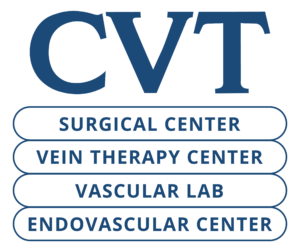Critical Limb Ischemia (CLI) is not merely a medical diagnosis; it’s a severe condition that significantly impacts life and requires immediate, aggressive intervention to prevent the most dire outcomes, including limb loss. CLI, the most advanced stage of Peripheral Arterial Disease (PAD), affects millions but remains both underdiagnosed and undertreated. This blog aims to illuminate the severity of CLI, underscore the critical nature of prompt and effective treatment, and offer an overview of state-of-the-art interventions available for those living with this condition.
Understanding the Severity of CLI
CLI is marked by dramatically reduced blood flow to the extremities, leading to severe pain, non-healing ulcers, and the risk of gangrene. With mortality rates alarmingly high—24% within one year of diagnosis and 60% within five years—CLI stands out for its lethality, surpassing many forms of cancer in mortality rates. These statistics highlight the condition’s critical nature and the need for effective management and treatment strategies.
The Challenge of Underdiagnosis
Among the estimated 9 to 20 million Americans with PAD, approximately 11% suffer from CLI. However, this figure likely underestimates the true prevalence due to diagnostic coding limitations and the complex nature of the disease. Many individuals with CLI remain undiagnosed until the disease has significantly progressed, emphasizing the need for increased awareness and improved diagnostic practices among healthcare providers and patients alike.
Critical Limb Ischemia & Diabetes in Louisiana
Louisiana faces a unique set of challenges when it comes to managing diabetes and its complications. The state has consistently ranked high in diabetes prevalence, obesity rates, and cardiovascular diseases over the years. These rankings can partially be attributed to the state’s rich Creole and Cajun culinary traditions – known for their indulgent and high-calorie dishes. The interplay of these factors exacerbates the risk of Critical Limb Ischemia among individuals with diabetes.
CLI causes not only physical suffering but also emotional and economic burdens on individuals and their families. Moreover, the strain on Louisiana’s healthcare resources intensifies as the demand for specialized care and rehabilitation services rises.
Innovative Treatment Options for CLI in Baton Rouge:
- Atherectomy: This includes laser atherectomy, where a laser probe vaporizes plaque pieces, and directional atherectomy, which uses a catheter with a rotating blade to remove plaque.
- Angioplasty: This procedure involves inserting a tiny balloon through a puncture in the groin, which is then inflated with saline solution to open the artery.
- Stents: After angioplasty, metal mesh tubes are placed to open the artery.
- Revascularization: This procedure involves using stents, balloons, or a bypass to restore blood flow by opening veins or routing around blocked arteries in the leg.
Recovery from these endovascular therapies typically spans only a few days. A bypass graft may be recommended if these treatments do not sufficiently restore blood flow. During this surgical procedure, specialists use an artificial tube or a vein from the patient’s body to reroute blood flow around the damaged artery, effectively bypassing the area of restricted blood flow.
The Importance of CLI Advocacy and Education
For patients facing CLI, it’s critical to advocate for comprehensive care, including thorough diagnostic evaluations and consideration of all available treatment options. Limb amputation should be seen as a last resort, pursued only after all other avenues for restoring blood flow have been explored.
Critical Limb Ischemia demands immediate attention and aggressive treatment strategies. By understanding the severity of CLI, advocating for proper care, and seeking advanced treatment options, patients can improve their quality of life and significantly reduce the risk of limb loss. Remember, navigating the complexities of CLI requires not only state-of-the-art medical intervention but also a supportive network of care providers, family, and friends.
At CVT Surgical Center, our local practice is committed entirely to providing the most advanced treatment and managing vascular issues, including CLI. CVT Surgical Center has been a leader in managing vascular disorders since 1957. Drs. Mike Davis, Michael Conners, James McNeil, Gulrez Mahmood, and Matthew Abate are board-certified in treating peripheral vascular disease and offer state-of-the-art treatments.

